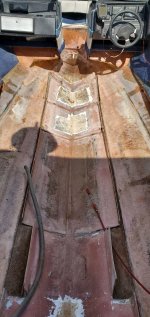jeffrey.bean
Seaman
- Joined
- Jan 12, 2008
- Messages
- 60
I’m redoing a 1990 Chawk 18, stringers transom and obviously the sole.
I’m in the process of removing all the old core material and plan on using ACX plywood.
This is my first restoration and have no real experience with either, beside small repairs.
I’ve heard not to use poly if it’s below 65°, can epoxy be used at lower temps? I’m in MD and doing the work in my garage. I’ll be using space heaters to bring the temp up, but not sure if I’ll be able to hit 65 in Jan/Feb.
What is the procedure if I do a layup, on say a stringer one day and can’t get back to do the bulkheads that tie into it for a few days, how do I tie in the next lay up? If using epoxy, do I just wipe the blush off, or do I need to sand as well, what about poly?
Thanks
I’m in the process of removing all the old core material and plan on using ACX plywood.
This is my first restoration and have no real experience with either, beside small repairs.
I’ve heard not to use poly if it’s below 65°, can epoxy be used at lower temps? I’m in MD and doing the work in my garage. I’ll be using space heaters to bring the temp up, but not sure if I’ll be able to hit 65 in Jan/Feb.
What is the procedure if I do a layup, on say a stringer one day and can’t get back to do the bulkheads that tie into it for a few days, how do I tie in the next lay up? If using epoxy, do I just wipe the blush off, or do I need to sand as well, what about poly?
Thanks





















